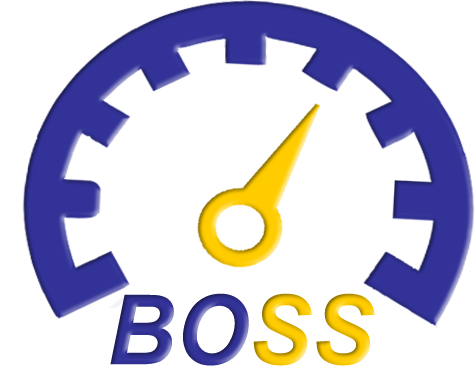
Emission Management and Optimization
CII & Sea Cargo Charter (SCC) compliance and more
The marine industry is aligning its efforts to promote international shipping decarbonization. The International Maritime Organization (IMO) has set an ambitious goal to reduce shipping’s total annual Greenhouse Gas emissions by at least 50% by 2050. As a first step to achieving this goal, IMO has introduced a standard metric for the current emission efficiency of ships called the Annual Emission Ratio (AER). AER measures the emission efficiency in terms of grams of CO2 emitted per cargo-carrying capacity and distance sailed. From this metric, a vessel rating scheme called Carbon Intensity Indicator (CII) is devised that gives an annual rating to the vessel based on the CII thresholds for the given vessel type. To align with the goal of decarbonization, the rating thresholds will become increasingly stringent towards 2030.
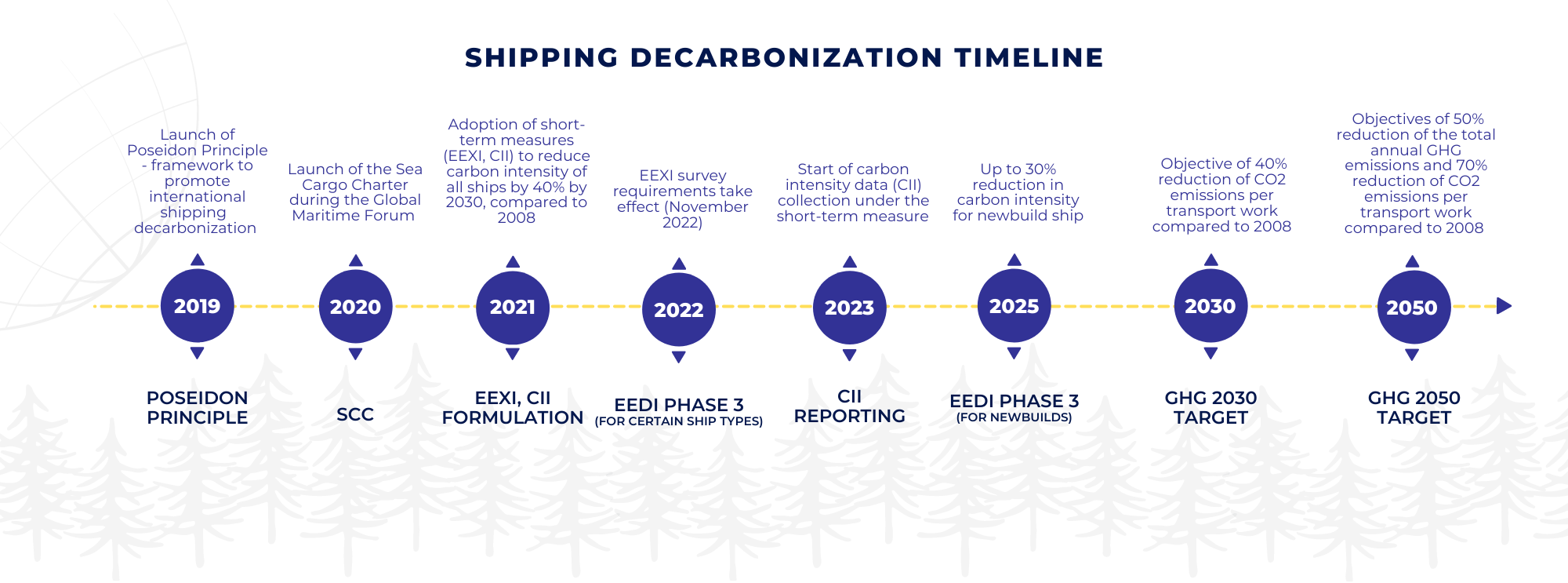
While CII standardizes the metrics for measuring maritime emissions, the Sea Cargo Charter (SCC) establishes a framework for assessing and disclosing the emissions from ship chartering activities around the globe. Signatories of the SCC are required to report their emissions data for each voyage in a standard format. The emissions for each voyage are aggregated from the first ballast leg and need to be apportioned between various sub-charterers for voyages carrying parcels from multiple charterers.
To comply with the latest CII and SCC guidelines, BOSS streamlines data-collection, validation and reporting of emissions data. Let’s look at how BOSS can provide a one-stop solution for not only adhering to the reporting standards of CII and SCC, but also optimizing the emissions to achieve the annual emission targets for your fleet.
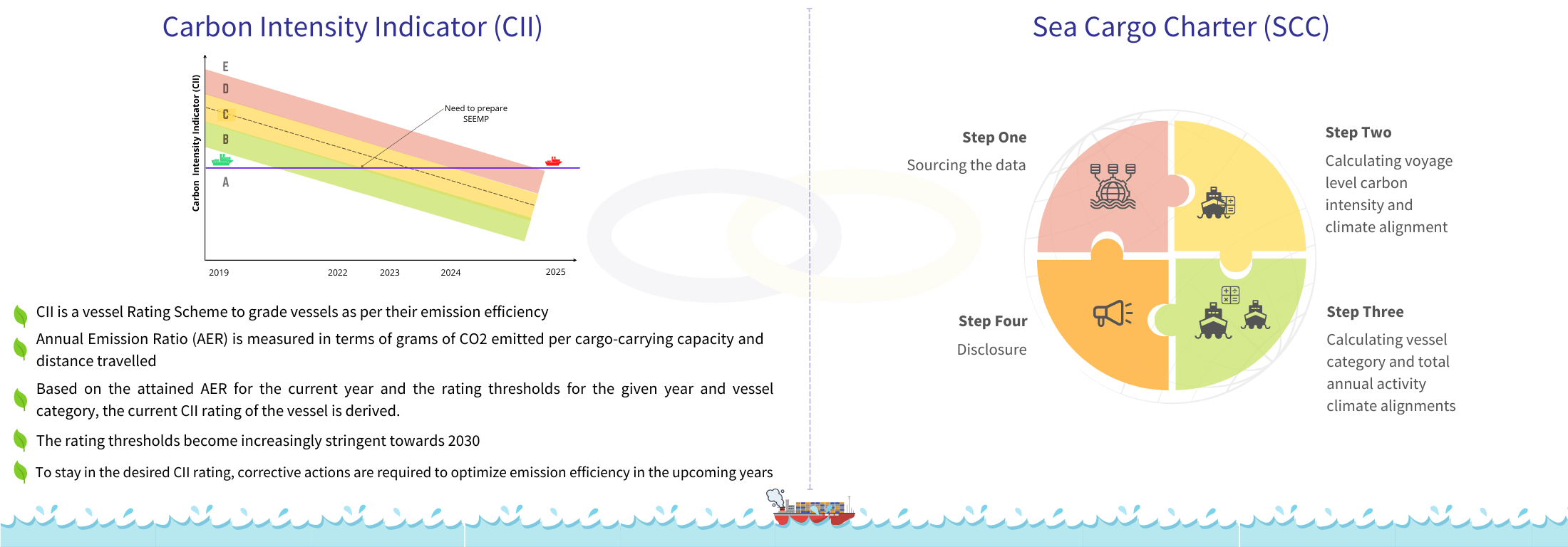
Data-Collection for CII and SCC in BOSS
For vessels enrolled in BOSS’s complete voyage optimization suite, the data required for CII and SCC is collected through the MIRROR noon reporting system. Since MIRROR data serves as the basis of many commercial and performance reports, the data undergoes several layers of client and server side validations, including cross-validation against SAT-AIS feed, weather hindcasts and sensor data. The latest MIRROR forms contain all the fields required for accurate CII and SCC reporting - grade wise daily fuel consumptions, cargo quantities, port maneuvering distance and daily noon distances. Voyage data aggregated from the daily reported data serves as the basis for emissions calculations and reporting.
For vessels that are not enrolled for daily noon reporting, BOSS collects the required data through a single voyage reporting offline HTML form. The form is compliant with most recent SCC guidelines and collects data from the first ballast leg till the last laden leg of the voyage.
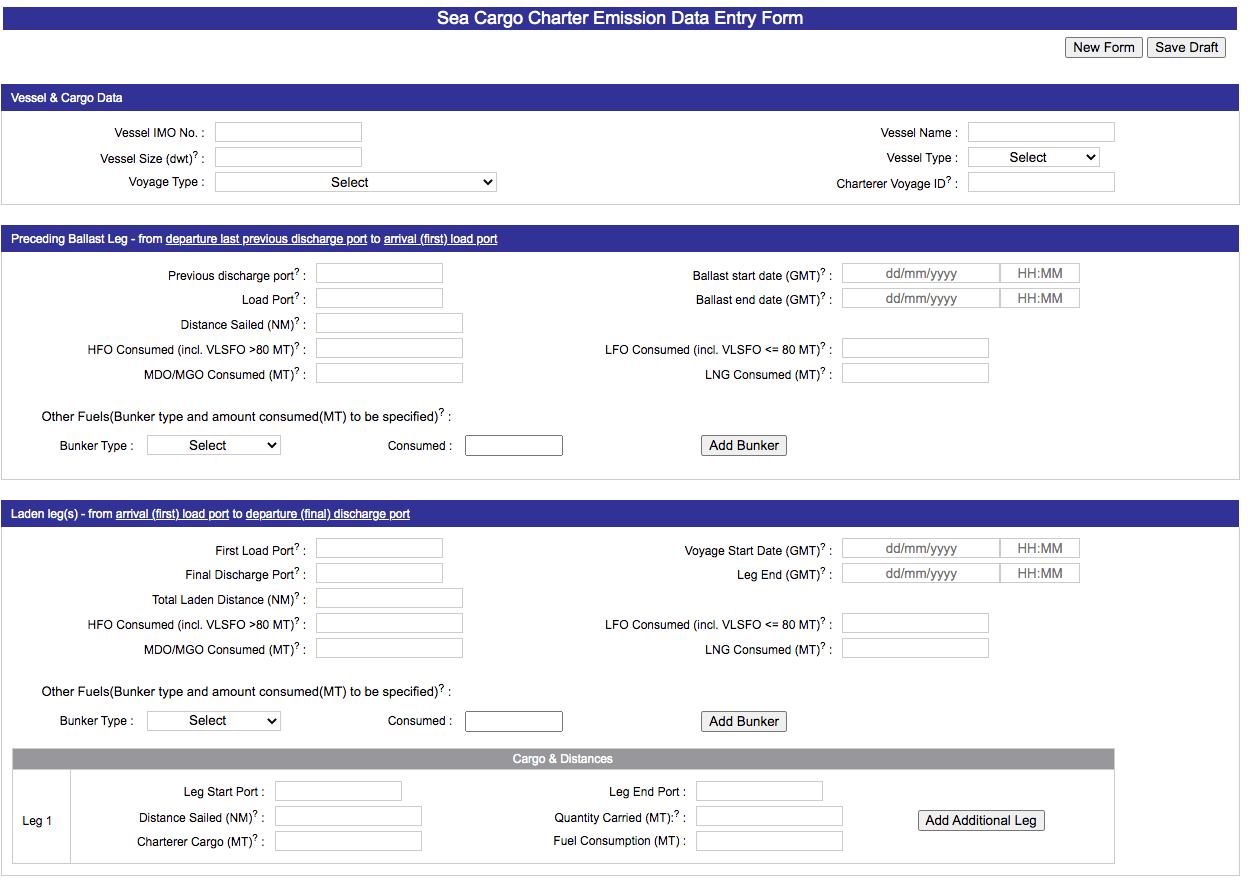
For both of the above reporting systems, BOSS has the provision for parceling cargo quantities between multiple charters if applicable. The parceling information is collected from the voyage operator using a separate offline html form. The emissions are apportioned between various sub-charters as per the transport work which is calculated from the cargo-quantity and port to port distance for each parcel.
CII Dashboards
Once the voyage data is logged and verified using one of BOSS’s reporting systems, we can export the CII report for any vessel with the click of a button. The greenhouse gas emissions are estimated from grade-wise consumptions using emission coefficients approved by the IMO. From the estimated emissions and the distance traveled, the emission efficiency is calculated which is in turn used to derive the CII rating for each vessel.

The CII report reflects the current CII rating of the vessel and the target rating thresholds for the upcoming years. The CII rating of each vessel is also reflected on multiple monitoring dashboards for quickly identifying and comparing vessels that fall in high-emission category.
SCC Reports
The signatories of SCC are required to report the climate alignment scores of their chartering activities on an annual basis. The climate alignement scores are aggregated from the emission data of each voyage. The underlying methodology for emission calculation is the same for both CII and SCC. However, Energy Efficiency Operational Indicator(EEOI) is normalized by cargo quantity instead of deadweight which was used for AER calculation in CII.
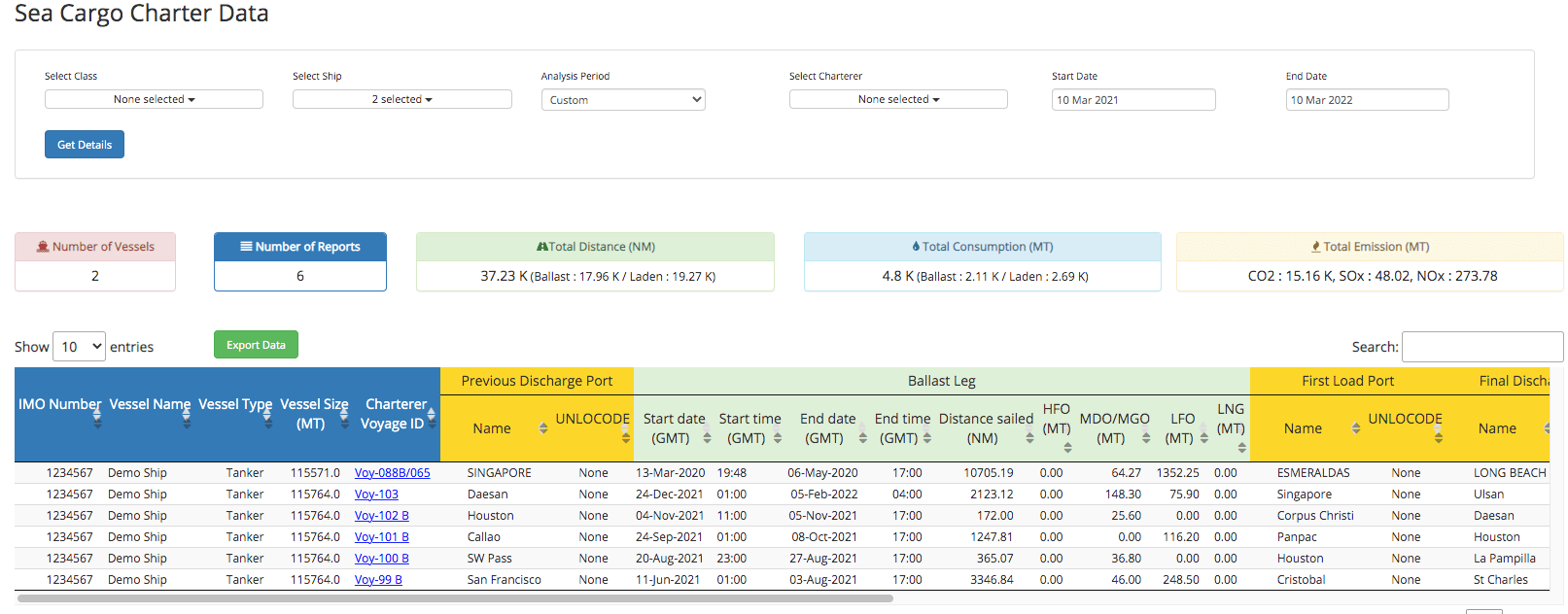
SCC reports also require splitting the voyage emissions between sub-charterers if the voyage is transporting multiple cargo parcels from different charterers. BOSS seamlessly handles all these caveats behind the scenes and provides a user-friendly dashboard for exporting the SCC report for your entire fleet with the click of a button.
Optimizing Emissions
The long term solution for a zero-emission marine industry requires a shift towards cleaner fuels and renewable energy sources. While this transition can take several years, there are many short-term measures that can be undertaken to meet the emission targets for the next few years. BOSS offers a variety of decision making tools for optimizing the emission efficiency of a given vessel. With real-time simulations taking into account forecast weather and current vessel performance, BOSS makes it easy to identify route and speed options for minimizing the emissions for a given passage. While slow-steaming is an obvious choice for reducing emissions, it may not be the most optimal choice for optimizing the voyage cost or TCE. To optimize emissions without increasing the voyage cost, BOSS weather routing algorithm uses dynamic speed and course scheduling to derive the most optimum voyage plan for a given arrival time.
Not only does BOSS optimize emissions for a given passage, the performance monitoring dashboards can help quickly identify underperforming vessels. Performance monitoring dashboards analyze, track and compare the performance and emission efficiency of multiple vessels. Timely identification of underperforming vessels can aid in taking corrective actions such as - hull cleaning, scrubber fitting and switching trading areas amongst the vessels. Taking timely decisions not only helps in achieving target emission reduction goals, but also greatly reduces the operating cost of the vessel.